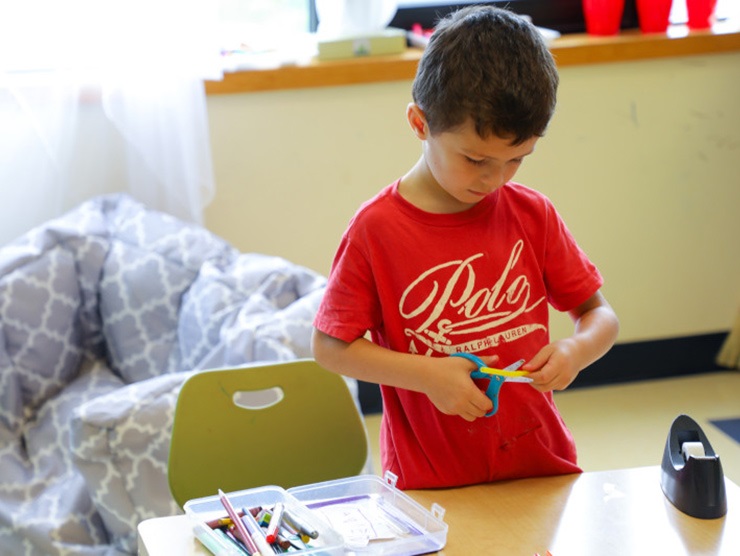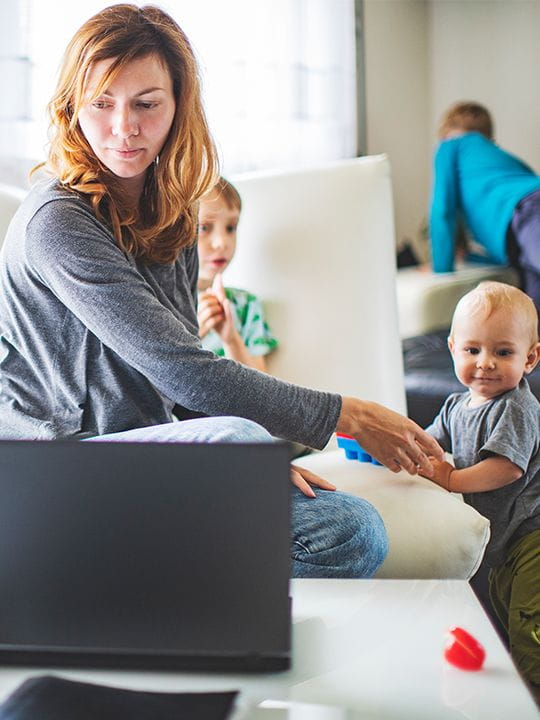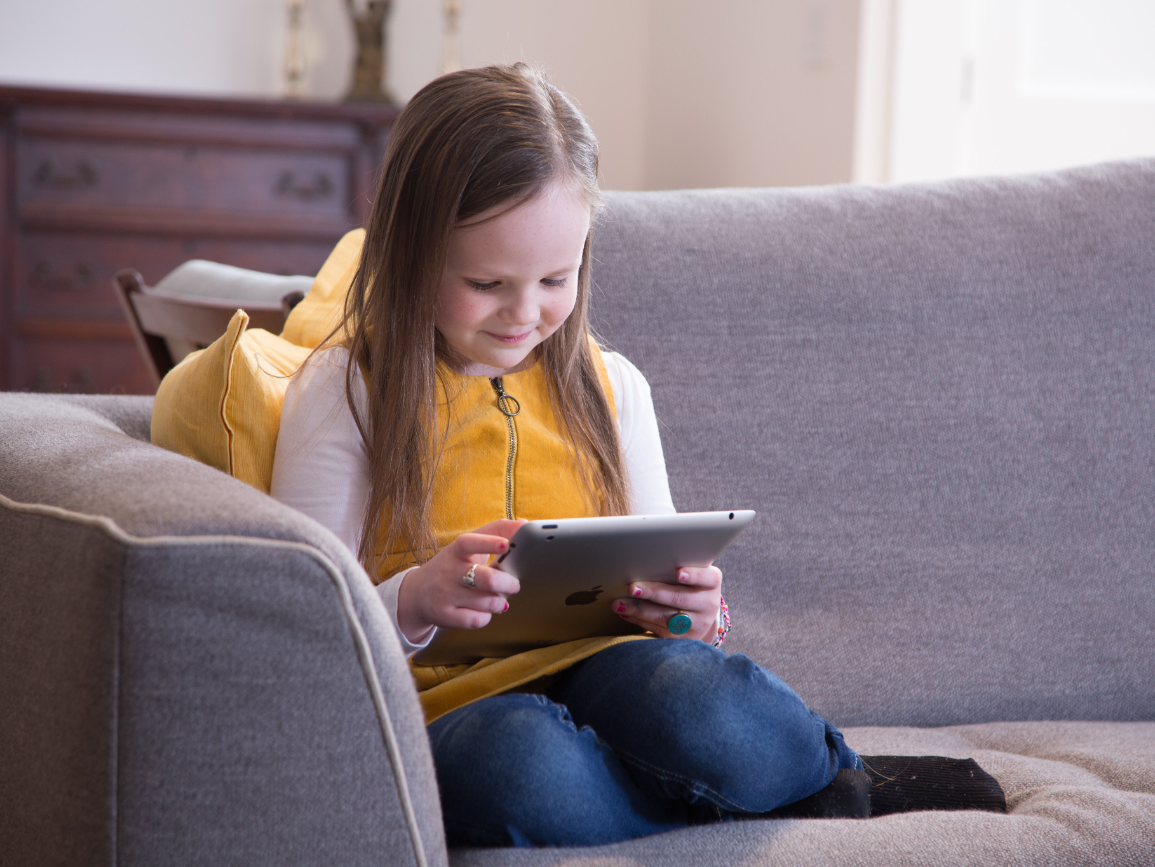Channel your efforts into these four strategies as you approach the school year:
- Proactive Expectations and Communication
- Routines, Schedules, and Rituals
- Your Child’s Space for Learning at Home
- Communicating with Your Child’s Teacher
- Webinar: The New Back-to-School
Proactive Expectations and Communication
Finding a balance between working and parenting can be challenging. Parenting during a pandemic dramatically increases that challenge, now working from home while also supporting your child’s remote learning. Here are some strategies to help ease the stress.Communicate Your Expectations to Your Child
Develop a clear plan. It’s essential to spend time proactively creating and communicating your expectations to your child up front. Depending on age and ability, your child might need a little support — or more than a little. Be flexible. Revisit your plans for combining work plus school after a few days and adjust them if necessary.
Discuss your schedule. Talk with your child about specific times in the day when you will not be available. Come up with a plan for what children can do if they have a problem or need help. If they are stuck on a school assignment, for example, they can move on to another task, read a book, or ask an older sibling for help while they wait for your assistance.
For younger children, consider using a “red light, green light” visual cue. When you have the stoplight picture out with the arrow pointing to the red light, it means you shouldn’t be interrupted except for emergencies until the arrow points to the green light. For older children, a sticky note with options serves as a good reminder to keep them on task.
- Have a specific conversation with your child about what constitutes an emergency. There is a huge difference between losing the red marker cap and losing the family dog. Discuss different scenarios so you child is clear about what qualifies as an emergency and requires interrupting you no matter what.
- Discuss the choices for what your child can do once they have finished their work. If screen time is an option, decide on realistic time limits and set pre-determined boundaries for acceptable use.
Download the complete guide: Proactive Expectations and Communication.
Set Your Child Up For Success
Make sure your child has the resources they need to stay productive by doing a bit of prep up front:
Do a tech check together. Ensure your child knows how to find and utilize the technology and links needed to complete their assignments. Practice together so they can do it independently.
Simplify tech use. Keep a centralized log book with user names and passwords for school sites they need to access. Remind them they can refer to this as often as needed.
Get organized. Put together a bin of school supplies so there are extra materials handy when needed.
Encourage Your Child to be Independent
Encourage age-appropriate independence. Set up a lunch-making station and encourage children to make their own lunch or snack occasionally. Stock a box in the pantry with less-perishable food items such as bread, crackers, and dried fruit. Stock a similar box in the fridge with fruit, cut veggies, yogurt, hummus, cheese sticks, or deli meat. Make a sign that lists the elements of a healthy lunch, e.g., one grain, one protein, one fruit, and one vegetable, so children can easily gather their own lunch items from the boxes.Develop a plan to keep the household running smoothly. With everyone home, messes grow quickly. Teach children to independently put things away and tidy up their workspace when they’re done. Build a few quick cleaning times into your daily routine, such as a “10-minute tidy” before or after meals.
Prepare for the Unexpected
Great teachers have all sorts of magic tricks up their sleeves for those times when things don’t go exactly as planned in the classroom. You should have some parental magic as well.
Gather engaging, open-ended materials. Spend a little time putting together a few boxes of items that will engage and interest your child. Include child-safe items for them to explore. Maybe it’s a prop box of items related to camping to spark an imaginary adventure, or perhaps it’s a new puzzle, or open-ended materials with vivid colors that invite creativity.
Make visual reminders. Create a noise meter so children can visually see when it’s an appropriate time for noisy activities, and when it’s time for quiet voices, such as when you’re on a conference call.
Set up a special space for your child. It can be as simple as a calming corner with soft blankets or pillows. When your child is feeling frustrated, tired, or overwhelmed, they can take a little time to regroup in a relaxing, soothing space.
Remember that it’s okay for your child to be bored sometimes. Boredom motivates children to engage in beneficial creative and imaginative play that wouldn’t happen otherwise, so don’t feel pressured to fill every second of their day.
Have Patience and Keep Adjusting
Be patient with yourself and your children. You’re going to have hard days. When frustration builds, pause for a mindfulness moment or do something fun and silly. Turn on some music, enjoy a book, or do some physical activity together. Expect some conflict as you become accustomed to being home together more. Talk with children about conflict resolution and encourage them to take breaks.
Focus on relationship building. Children need reassurance and comfort. What works in a school setting doesn’t always work at home. Sprinkle in moments of talking, playing, or reading with children to remind them that while your days may look different, your enjoyment of the time spent together remains the same.
Download the complete guide: Proactive Expectations and Communication
Routines, Schedules, and Rituals
Having some predictable structure and rituals goes a long way to support children’s emotional well-being. Here are some suggestions to smooth this transition and encourage a back to school mindset.
Establish clear routines to eliminate daily decision-making and increase efficiency. Being able to complete the routine without parental prompting gives children a feeling of accomplishment and promotes accountability. For young children who aren’t able to read yet, visual routines (with pictures) give a sense of independence. As children get older, visual routines can be replaced with simple check lists until a habit is created.
Talk positively about the new routine. Children often adopt the attitudes held by the adults in their lives, so it’s important to be a role model of positivity even in times of uncertainty.
Practice your new routine. Begin your new back-to-school schedule three to five days prior to the first day. Remember to wake up early enough to incorporate time for everything that needs to get done such as breakfast, packing lunches, gathering belongings, catching the bus or carpool, etc. For preschool and older children, let them know that a transition is coming so it’s not a big surprise on the first morning. Talk through any questions they may have.
Start gradually, knowing that the transition to your new schedule might not be perfect. Talk with your child about what seems to be working well, and where there are opportunities to improve the process.
Maintain beloved family rituals. If you’ve always taken first day of school photos, continue doing that — even if your child will be learning online. Keep up existing rituals of wearing a new outfit on the first day, loading new school supplies into backpacks — whatever it is, keep it going! Consider adding new rituals or ideas to what you’ve done in the past. If your children are learning from home, maybe there’s now more time for a special first day breakfast, for example.
Maintain your bedtime and sleep schedule. Children might balk at this, but it’s healthy to maintain this normalcy to wind down and cue the brain and body it’s time for sleep.
Download the complete guide: Routines, Schedules, and Rituals
Your Child’s Space for Learning at Home
The physical space where children learn is almost as important as what they learn. With a significant number of children participating in full or part-time remote learning for the upcoming school year, many parents are focused on creating a designated space for learning at home.
Here are some things to consider as you establish a consistent learning environment with your child.
Work Together to Create Space for Learning
Ask for your child’s opinion on what they think will make their space the most productive. Consider seating and work surfaces, light, noise,distractions, access to digital technology, and proximity to help when needed.
If you have multiple children who will be learning at home, work together to determine the most effective set up. Do they do well working closely together, or would it be beneficial to spread out?
For smaller spaces, develop strategies to help children identify their personal work areas. Each child could have a placemat or work tray, or use painter’s tape to designate individual work spaces. Consider color coding supplies so that each child’s individual materials are a specific color.
When the learning space is located in a communal area such as the kitchen table, organize learning materials to allow for quick, organized transitions. For example, backpacks or baskets are efficient for packing things up when it’s time for meals, etc.
For older children who prefer to work in their bedroom versus a shared space, come up with an agreed upon schedule as a compromise, e.g., half days in their room, or three days in a shared space, and two days in their room, etc.
Part of the fun of a new school year is getting a few new school supplies. Take inventory to determine what needs to be replenished and let your child choose the items. Spend time setting up and organizing the space together to make it functional and inviting. When children have ownership over their space, they will be more motivated to utilize and maintain it.
Download the complete guide: Creating a Space for Learning
Communicating with Your Child’s Teacher
Going back to school with a virtual or hybrid model during the pandemic will require teachers and families to work together and communicate even more effectively. With many changes to policies and operations, staying informed and connected may reduce your feelings of anxiety and provides a way for you to support your child’s learning at home.
Be proactive about communication. Establish positive communication with your child’s teachers right away. Find out their preferred method of communication and the best times to reach them. Determine your questions and ask for details up front, which will eliminate many problems later. Consider information you need to know such as:
- How will absences or late arrivals be handled?
- How will assignments be turned in?
- Is parent help for homework encouraged?
- What are the details for the teacher’s learner motivation plan?
- How are students held accountable?will learning be personalized remotely?
- Will there will be regular opportunities for teacher-student check-ins remotely?
Work collaboratively with teachers. If you have questions or concerns throughout the year, address them in a non-confrontational manner, and be open-minded to partner towards a solution.
Be supportive of your child’s teachers. Remember that none of us have been through this pandemic before and teachers are working to provide students with the best possible learning opportunities under the circumstances. Speak positively about them in front of your children and remember to express your gratitude to teachers directly.
Focus on your child’s best interests. Most importantly, remember that when parents and teachers work together, a child has a team of caring and consistent adults who are committed to bringing out the child’s best!
Download the complete guide: Communicating with Your Child's Teacher
Webinar: The New Back-to-School
Watch the webinar to hear these, and more, flexible strategies that can help your child stay on track, increase motivation to learn, build independence, and find success.
This school year brings some unique challenges, as well as opportunities to think about education in innovative ways. Your knowledge of your child’s temperament, interests, and abilities can allow you to adjust and thrive as you discover new ways of learning.





